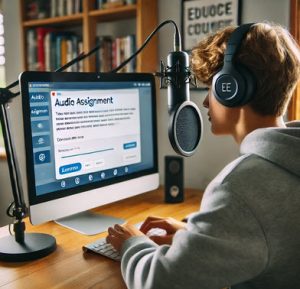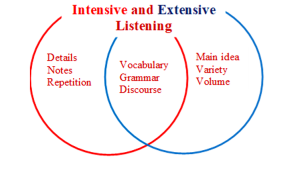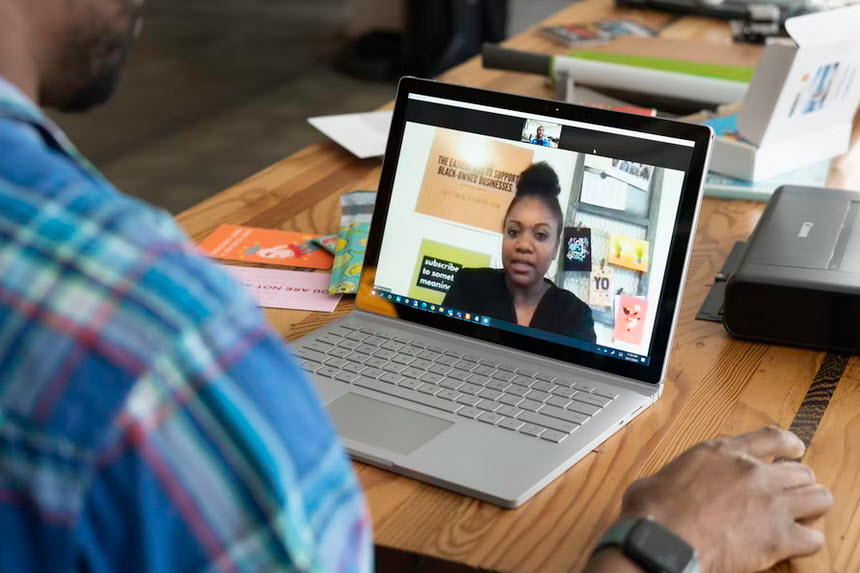 I was fortunate enough to have moderated a few Avenue webinars on Poodll technologies in June. The webinar speaker was Justin Hunt, the founder and CEO of Poodll. I have since been developing learning experiences for the CanAvenue.ca project using Poodll technologies and would like to share some of the basics with the TESL Ontario community through this blog post and a TESL Ontario webinar.
I was fortunate enough to have moderated a few Avenue webinars on Poodll technologies in June. The webinar speaker was Justin Hunt, the founder and CEO of Poodll. I have since been developing learning experiences for the CanAvenue.ca project using Poodll technologies and would like to share some of the basics with the TESL Ontario community through this blog post and a TESL Ontario webinar.
Category Archives: Listening
Incorporating Listening Activities Into Literacy Classes

Literacy teachers emphasize reading and writing because those are the only two skills assessed at the literacy level. However, when does the attention given to those two skills become excessive? And, by devoting the bulk of class time to those two skills, do we do so at the expense of a holistic approach to teaching?
Continue readingThe Silent Barrier of Language Learning
Language learning is always challenging, with the fear of making mistakes standing out as one of the barriers. The fear is often rooted in shame, signaling to language learners that they will face rejection in the form of judgment, invalidation, punishment, scolding, etc. This fear leads to students’ reluctance to embrace errors as stepping stones to fluency.
Continue readingListening in Language Learning Part II: Extensive Listening
 This two-part blog focuses on tips for improving your students’ listening skills with both intensive and extensive listening methods. If you haven’t yet, go read Part I: Intensive Listening, then come back to read Part II. In this second part I will focus on extensive listening by offering tips for extensive listening practice, some resources for teachers to utilize, and some overall listening goals for teachers to bear in mind.
This two-part blog focuses on tips for improving your students’ listening skills with both intensive and extensive listening methods. If you haven’t yet, go read Part I: Intensive Listening, then come back to read Part II. In this second part I will focus on extensive listening by offering tips for extensive listening practice, some resources for teachers to utilize, and some overall listening goals for teachers to bear in mind.
Extensive Listening
Just like extensive reading, this activity involves listening to ‘self-selected’ listening material slightly below the student’s proficiency level and in large quantities. The focus is on overall understanding because the task is more relaxed and self-directed, with learners listening to longer audio or video selections without necessarily trying to understand every word. The goal of extensive listening is to develop overall listening comprehension skills, get used to the sounds and rhythm of speech, and become more familiar with the language in a natural way.
Continue reading
Listening in Language Learning Part I: Intensive Listening
 This two-part blog post focuses on tips for improving your students’ listening skills with both intensive and extensive listening methods. In Part 1, I answer the question “What is intensive listening?”, offer tips for intensive listening practice, and suggest overall listening goals for teachers to bear in mind. After reading Part I, head over to read Listening in Language Learning Part II: Extensive Listening (coming on Monday, July 24th).
This two-part blog post focuses on tips for improving your students’ listening skills with both intensive and extensive listening methods. In Part 1, I answer the question “What is intensive listening?”, offer tips for intensive listening practice, and suggest overall listening goals for teachers to bear in mind. After reading Part I, head over to read Listening in Language Learning Part II: Extensive Listening (coming on Monday, July 24th).
Intensive and Extensive Listening
Much research shows that intensive and extensive listening alike are essential contributors to language learning in the areas of vocabulary development, grammatical skills, and discourse awareness. ESL learners need to practice both skills to reap maximum benefits. Though each form of listening tends to focus on different skills, they are complementary, and both are crucial. However, like extensive reading, extensive listening occurs outside of the classroom. Unlike with intensive listening, teachers need to pay special attention to motivate their students to engage in such extensive skills on their own.
Continue reading
Enhancing Students’ NOTE-TAKING Skills II: Assuring the Greatest Benefit from Note-Taking

This is Part II of a 2-part post on enhancing student note-taking. Be sure to also read Enhancing Students’ Note-taking Skills I: Note-taking Methods. Students’ commitment to conscientious note taking will be strongest when they understand and actually experience the resulting benefits. Those advantages can be perceived on three levels: a) overall life skills, b) course-by-course survival skills, and c) winning tactics.
Continue readingDaily Small Talk
As a person and as a language instructor, I hear the words ‘small talk’ and I shudder. However, I have learned – after teaching online for nearly three years now – not to underestimate the opportunities and utility of focusing specifically on Small Talk in class. Focusing on Small Talk has always been successful. When surveyed, learners consistently report that they want more Small Talk rather than less.
I started teaching virtually with a fairly small class (CLB 7) who really responded to Small Talk. For one thing, I found the class needed to deal with mental health issues – near the beginning of COVID – and needed to feel as social as possible in a virtual environment. That’s when I started to develop Small Talk as an integral activity. Most recently, I had a much larger class that also responded very well to the Small Talk activities. This activity is not a one-off lesson but rather focuses on best practices, routine, feedback, and refinement.
Continue readingCreating Dialogues Remotely
Over the pandemic, several instructors have commonly requested assistance with recording dialogues for PBLA activities, assessments, reading practice or listening activities. In this post, I have detailed the steps. These steps focus on preparing a listening dialogue for a class activity. I am sure that many instructors and students have devised their own hacks for this issue, so if you have invented better methods, please add them to the comments below.
Continue readingMultimedia English Class with Ted Talks
Teaching research writing and communication courses has been one of the best experiences I have had in my teaching career so far. One of the challenges, however, has been encouraging students to read articles before joining classes. These reading articles are a prerequisite for our students to complete a series of reflective reading and writing practices. Therefore, I have started taking advantage of TED Talks as a not so state-of-the-art, but practical resource for a college communication course. Here are a few ways I use this resource in my classes:
Continue readingStudents in Charge: Ideas for Reading and Listening Activities
Recently, I did a small experiment with my students. Instead of me assigning reading and listening tasks, I asked them to read an article and watch a YouTube video, and then make their own questions as if they were teachers. The results and feedback were quite astonishing.
Continue reading




